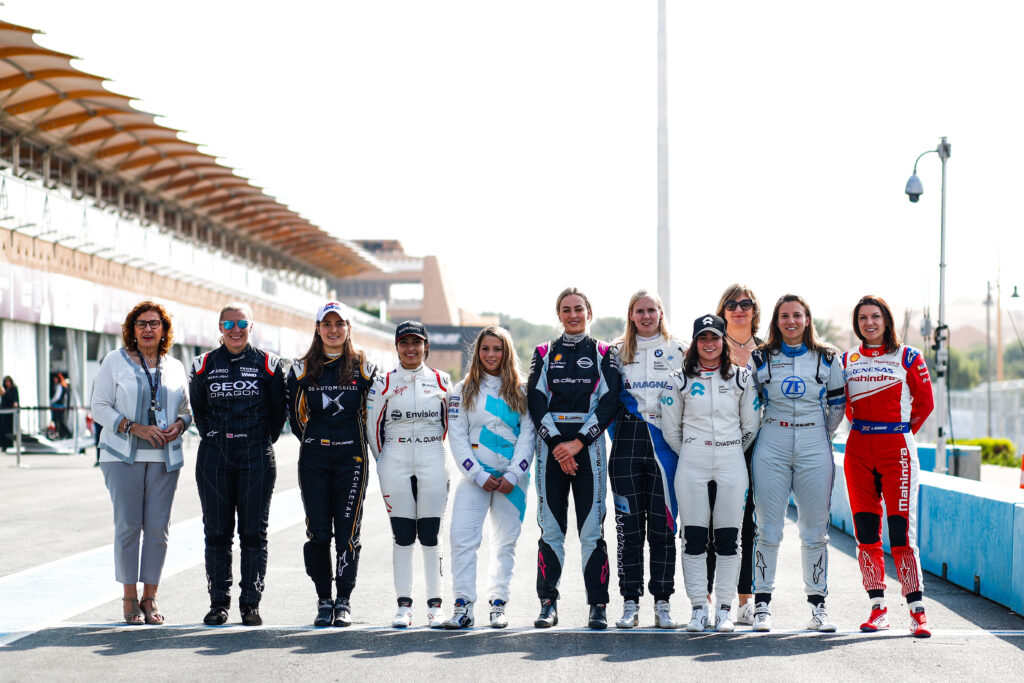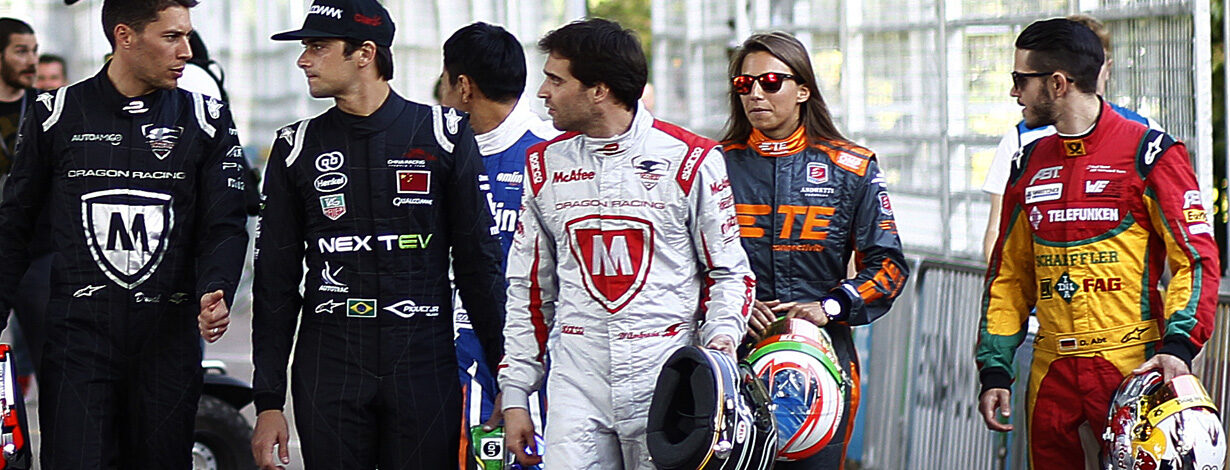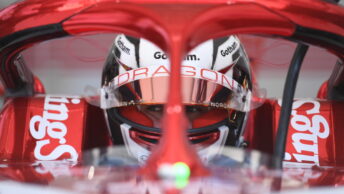Formula E started out as a curio that everyone assumed was going to fail. Pretty much like every woman in motorsport, noticed for being a plucky attempt but the cynicism about how far she can take it starts before she even hits the track. The series initially promoted women pretty hard – and there are signs it’s continuing with hope for testing opportunities for W Series racers this year, as Formula E becomes a world championship.
Here’s a weird similarity between Formula 1 and Formula E: the same number of women have scored points in each series. Formula E is seven years old, F1 is 70, but only Simona de Silvestro in Formula E and Lella Lombardi in Formula 1 have ever joined the ranks of those to have finished in the points.
De Silvestro has four points, all scored for an already-struggling Amlin Andretti in Season 2 (2015-16) and is the only woman to contest an entire season in Formula E. Two others entered races, Michaela Cerruti for the ill-fated Trulli squad and Katherine Legge for Aguri, both in Season 1 (2014-15). Neither got a full go at it and their biggest achievements, unfortunately, are being the first two women to collide in a top-flight FIA motorsport race – not a record anyone really wants, although it does show just how few women have competed over the years.
Legge – the only woman to be eligible for an FIA super licence since the points system came in – returned to the Formula E paddock to contest Jaguar’s I-Pace eTrophy and was the first woman to win an international all-electric race in Mexico in 2019.
Since de Silvestro left Andretti at the end of Season 2, however, there hasn’t been a woman in a race seat.
It’s oddly hard to find a lot of detail on Formula E’s beginnings, for such a new series, but early on the championship was actively looking for female drivers as part of its Formula E driver programme. The idea was to seek drivers of sufficient standard to compete, hence F1 near-misses Legge and de Silvestro being involved and Michaela Cerruti, although relatively inexperienced in single-seaters, definitely wasn’t being set up to fail.
Back then, the problem was similar to how it is now: there aren’t many female racing drivers and there are even fewer with top-flight single-seater experience. For Formula 1, that matters – the best driver in the world would struggle to go from a GT car to an F1 car. For Formula E, the intervening years have proven an interesting test; although some ex-F1, IndyCar or Super Formula drivers adapt quickly, there are a lot of drivers who’ve been instantly frustrated by a car very unlike the high downforce and finicky setup of a classic single-seater and are unable to get to grips with slippery tracks and ridged tyres.
Adaptable, comparatively inexpensive GT drivers have turned out to be a more stable pool and there’s much more women to draw from there. But now Formula E is a totally different game altogether anyway, with manufacturers lining the pit lane and their factory programmes bursting at the seams with drivers pulled from other series as COVID-19-hit budgets squeeze motorsport.
Ironically, it could be COVID-19 that sees a big opportunity for women to return to the pit lane, en masse. Women have tested Formula E cars since de Silvestro’s exit – including herself, as a development driver for Venturi in Season 5 (2019-19), now working for Porsche. Beitske Visser was BMW Andretti’s reserve and attended races for them in Season 4 (2017-18) and in Season 5, and Mikaela Ahlin-Kottulinsky, although not having done a Formula E test, has travelled with the Audi team as a driver representative.
The largest number of women testing top-flight single-seaters, alongside men, ever, was at the Diriyah in-season test in 2018. Contentious as a stunt, teams were allowed to run a second car for a day of testing provided a woman drove it – the sort of arbitrary constraint that’s held over a lot of testing, like whether Fernando Alonso counts as a younger driver than Carlos Sainz Jr but for obvious reasons, politically exacerbated by being in a country where women had only just been granted the legal right to drive.

Two teams chose not to run a second car, then – Jaguar and Audi. It will be interesting, in Valencia this year, to see which teams take advantage of a calendar quirk to run one or even two women at the Formula E rookie test that’s set to follow the E-Prix there. W Series, the all-female junior championship, are running their own testing later in the week and so 24 eligible rookies (none of the W Series drivers have participated in a Formula E race day session, although several have tested before) will be cleared to be in Spain and at the circuit.
In trying times for motorsport, it’d be almost funny to see women get given testing opportunities by the circumstances – it’s hard to believe if F3 happened to be testing two days later teams wouldn’t pick from their ranks rather than risk bringing other drivers in.
Chance of fate aside, though, Formula E did set out to promote women in motorsport and equality alongside its ecological aims. In the mad scramble to carry on existing, tumbling from race to race for its first three seasons, that might have had to be put a bit on the backburner. Same as the original intention to incorporate Esports, since revived by the same viral circumstances.
Formula E’s technically having its most prestigious year yet, having finally paid up for full World Championship status. It’s important, however, that if we see women getting opportunities in Valencia, that it’s not just a token gesture forgotten as fast as the Race At Home challenge was as soon as normality returns. Some things being the new normal is good…





